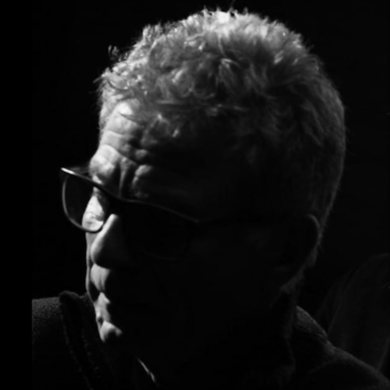Jane & Louise Wilson's black and white digital photograph Pagoda, H-bomb test facility, Lab 5, 2012, depicts a so-called ‘pagoda’ built on the former Cold War military site off the Suffolk shores, Orford Ness. The complex was constructed to house a covert H-bomb test site for the U.K. Atomic Weapons Research Establishment that was active until the early 1980s. Inside the pagodas or laboratories, vibration testing for the development of the H-bomb could be monitored. Jane Wilson: "We were intrigued by the architecture because it was built solely to test the casing of the H-bomb, a kind of nuclear experimentation, and there is something very pure about a function that dictates its form in terms of architecture." Louise Wilson: "The pagodas were specifically designed so that in the event of an explosion the uprights supporting the lid or the roof would blow out causing the surrounding shingle to fall inside and the roof to come down and contain the blast."
Pagoda, H-bomb test facility, Lab 5, is a still image from the artists’ work The Toxic Camera, a film that takes as it's starting point the fateful story of Ukrainian filmmaker Vladimir Shevchenko, who travelled to Chernobyl three days after the explosion at reactor four to document it's destruction and aftermath. Today, Orford Ness is a National Nature Reserve.



